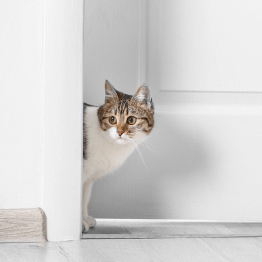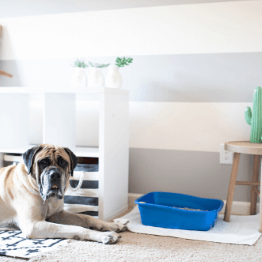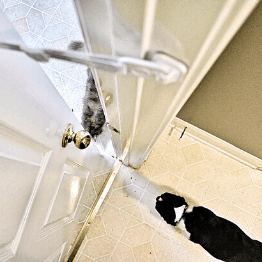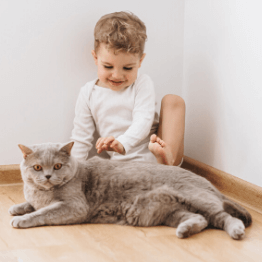CATS AND TODDLERS LIVING IN HARMONY
By: Door Buddy Editors | Published: 8 May 2024
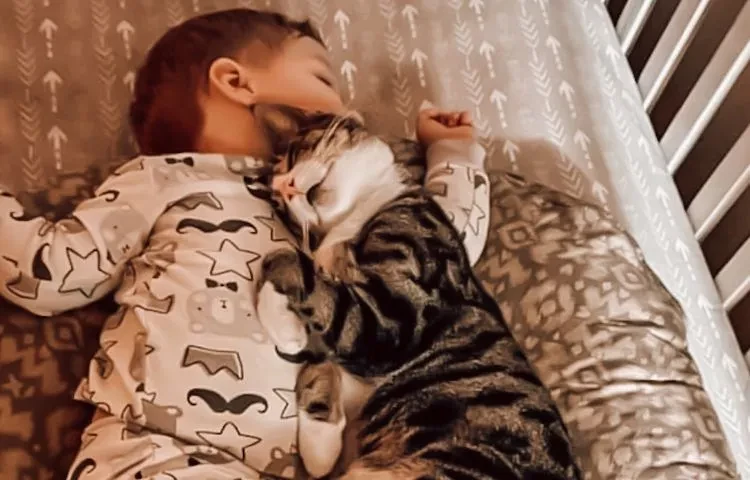
As your little one transitions from crawling to toddling, it's an exciting time of discovery. But if you've got cats at home, it also means navigating some unique challenges. From keeping the litter box safe to fostering those adorable kitty-toddler interactions, this blog is here to help. We know that cats and kids can be the best of pals, but it's all about supervising and fostering that bond.
As a parent and a pet owner, it's on you to make sure everyone gets along. And don't worry – we've got your back! Veterinarians are always fielding questions about how to keep the peace between kiddos and kitties. Sure, there might be a scratch or two along the way – they're both curious and playful, after all. But creating harmony? Piece of cake! In this blog, we'll share some easy tips for building a “purr-fect” relationship between your little humans and furry friends.
TEACHING TODDLERS HOW TO INTERACT WITH CATS
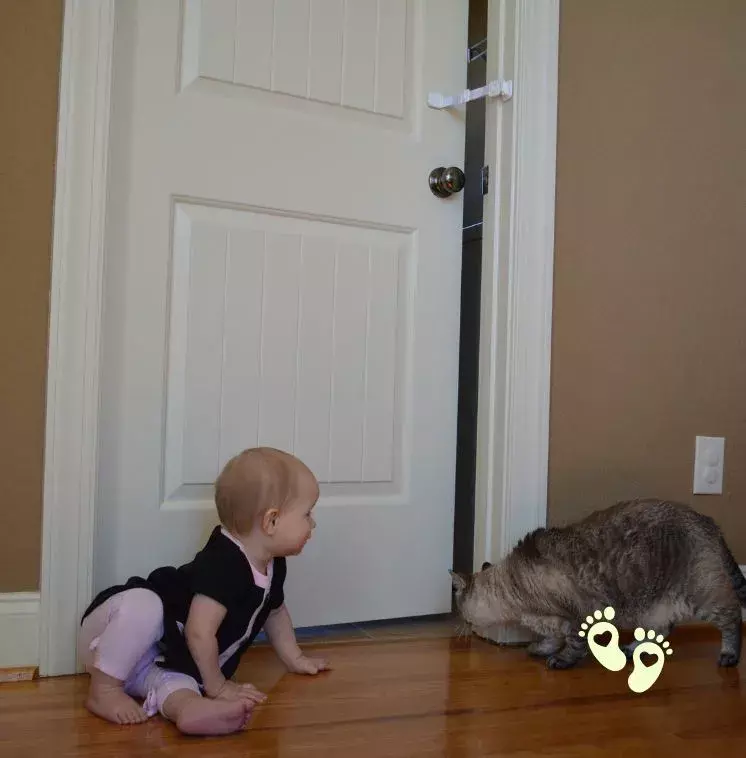
While you're child-proofing your home, don't forget about teaching your little one to be gentle with pets. Many families already have furry friends before their bundle of joy arrives, and it can be worrisome to think about your toddler not getting along with your beloved cat or dog. But don't stress! Loving parents aim for a joyful connection between their kids and pets, whether they're seasoned pet owners or welcoming a new puppy or kitten into the family. Wondering how to keep the peace between your little one and your feline friend? Check out these FAQs that shed some light on creating harmony between toddlers and cats:
1. How do I keep my toddler from playing in the cat's litter box?
Consider placing the litter box in an area just for your cat. Think of high-up spots or behind gates where your curious toddler can't reach. Alternatively, this is where our Door Buddy Baby Proof Door Strap comes in particularly handy. It allows your door to open just wide enough for your cat to enter and exit while keeping it narrow enough so your baby can't get in.
Another handy trick is to get a covered litter box. It gives your cat some privacy and keeps your little explorer from getting too curious. Having trouble finding the perfect litter box for your cat? Check out this article for some helpful tips!
With these simple tips, you can create a cozy and harmonious space where your cat feels right at home and your toddler stays out of trouble.
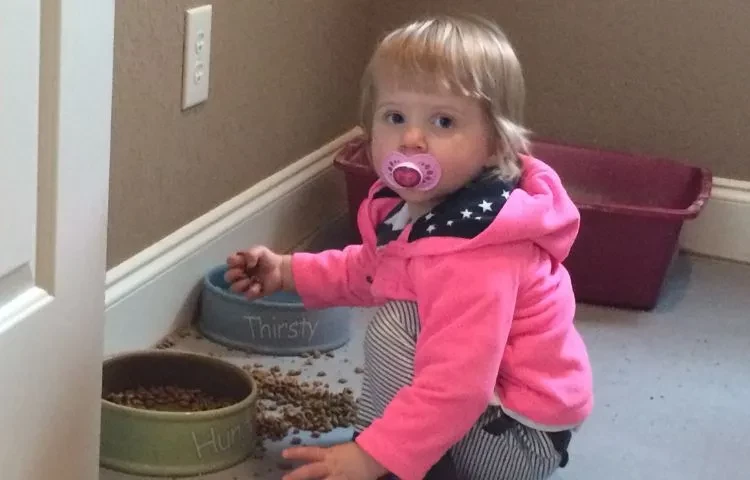
2. What steps can I take to prevent my child from eating cat food
To keep your kiddo from sampling the cat's cuisine, try these friendly solutions:
-
Set up a special dining spot just for your cat, perhaps behind a cute little gate. This creates a cozy feeding zone where your fur baby can chow down undisturbed, away from curious hands.
-
Get creative with high-up feeding stations! Placing the cat's bowls on elevated shelves or countertops not only keeps them out of reach but also adds a touch of flair to your space.
-
Utilizing the Door Buddy here is especially helpful to keep your toddler out of the cat food by securing it in a room that only your cat can access.
These simple tricks make mealtimes safe and enjoyable for both your little one and your furry friend!
3. Is it safe for my toddler to be unsupervised around the cat, and how can I teach my toddler to interact safely with the cat?
We're all about fostering that special bond between your little one and your furry friend. But as your baby grows into a tiny explorer, it's essential to keep things safe and friendly, and visits supervised.
Starting small, being gentle: toddlers can be a bit grabby, and cats might not be too keen on that. So, why not teach your child the art of "one finger" petting? It's a gentle way for them to show some love to Fluffy without getting too grabby.
Keeping it relaxed: cats like to be in charge of their own space, especially around little ones. So, encourage interactions on the ground where your cat feels more comfortable. And if you do decide to pick up your kitty for a cuddle session, keep an eye on their body language and let them go if they start to squirm.
Reading the signs: Like us, cats have moods. Look for signs that your cat needs a break, like big, round eyes, a twitchy tail, or ears pointing backward. Giving your cat some alone time now and then is totally cool—it keeps everyone happy and purring!
With these simple tips, you can create a friendly atmosphere in which your toddler and your cat can quickly become best friends!
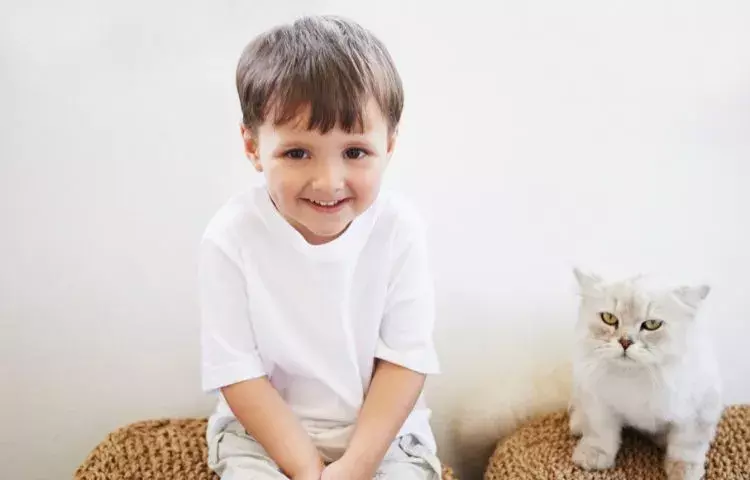
4. How can I manage my cat's jealousy with the attention given to the toddler?
We totally get it – you want to make sure your fur-baby feels just as loved and cherished, even with all the excitement of a new little human in the house. Don't worry, we've got some “purr-fect” tips to help you keep that feline friendship going strong.
-
Balancing act: Your cat might need a little extra TLC to adjust to sharing the spotlight. So, why not schedule some special "cat only" time each day? It could be a snuggle on the couch or a playful session with their favorite cat toys.
-
Quality hangouts: Life with a toddler can be a whirlwind, but don't forget to sprinkle some love on your furry friend too! Take a moment to give them a scratch behind the ears, toss them a treat, or engage in some interactive play. These little gestures remind your cat that they're still your number one furry snuggle buddy.
-
Stick to the routine: Cats thrive on routine, so try to keep things consistent, even with a new addition to the family. Whether it's meal times, nap times, or play times, sticking to a familiar schedule helps your cat feel secure and happy.
5. What are some signs that my cat is stressed by the toddler’s presence?
Keep an eye out for signs that your cat might be feeling stressed by the toddler's presence, like hiding more, changes in eating habits, increased aggression, or litter box issues. But don't worry, there are plenty of ways to help your kitty feel more at ease!
Firstly, make sure your cat has plenty of safe spaces where they can chill out away from the hustle and bustle. Think cozy beds tucked away in quiet corners or perches where they can watch the action from a distance.
Next, stick to your cat's usual routine as much as possible. Consistency is key to helping them feel secure and settled.
Finally, keep your cat entertained with lots of fun toys and activities to stimulate their mind and body. With a little TLC and some extra attention, you'll help your cat feel right at home, even with a busy toddler around!
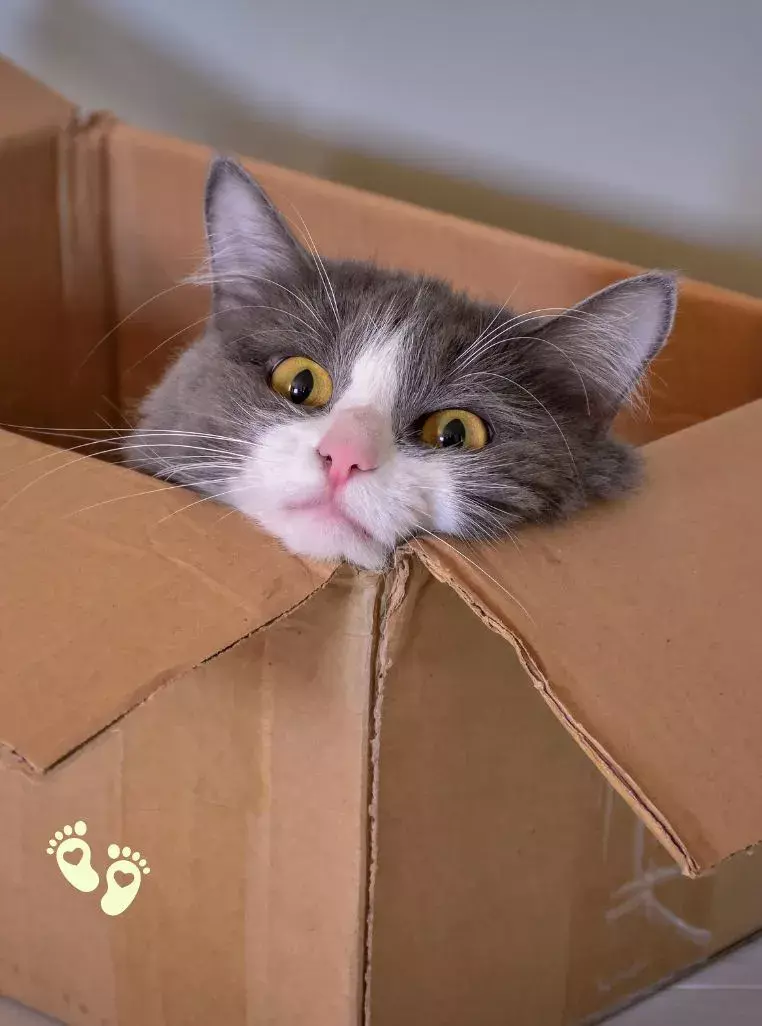
6. Are there any health concerns I should be aware of when my toddler and cat interact?
When your little one and your furry friend hang out, it's important to keep their health in mind. Here are a few things to keep an eye on:
-
Allergies: watch out for sneezes or itching after your toddler spends time with the cat.
-
Scratches and bites: trim claws to prevent scratches, and teach your toddler to gently handle your cat to avoid accidental nips.
-
Parasites: make sure your cat is flea—and tick-free, especially if it roams outdoors. Also, give both your cat and toddler a regular check for any unwanted visitors.
-
Hygiene: don't forget to wash hands after cat cuddles or litter box duty to keep everyone fresh and clean.
7. Can my toddler and cat bond and if so, how can I foster this relationship?
Watching your little one and your furry friend become best buds is the cutest thing ever. Here's how to make it happen:
-
Fun together: get them involved in feeding time! Your toddler can help scoop out the cat's food or fill up the water bowl under your watchful eye.
-
Gentle petting: during calm petting sessions, teach your child to pet the cat softly and speak to it sweetly. It's a win-win—the cat bonds and your kiddo learns compassion.
-
Storytime: share heartwarming stories of other kids and their cats to inspire your toddler's love for their furry friend. Reading books or watching cat cartoons together is pure joy.
-
Playtime: get them giggling with interactive play sessions using feather wands or laser pointers. It's a blast for both your child and your cat!
-
Respect the cat: teach your child to understand when the cat needs space and to give them room to chill out when they need it.
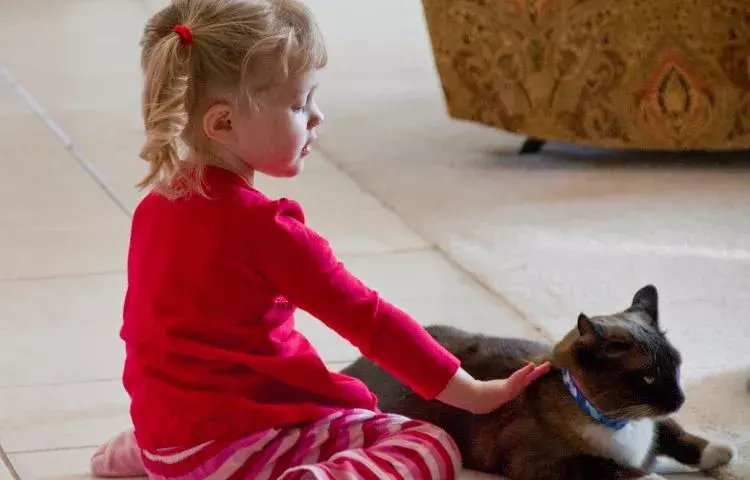
8. What are the best practices for supervision when toddlers and cats are together?
When your little explorer and your furry friend team up, it's all about fun and safety rolled into one. Here's why keeping an eye on them is super important:
-
Safety: think of yourself as the ultimate safety superhero! Constant supervision means you're ready to swoop in and save the day if things get a little too wild. Plus, it ensures everyone stays safe and sound, with no bumps or bruises in sight!
-
Learn: every supervised playdate is a chance for your toddler and your cat to learn and grow together. You can teach your kiddo about gentle petting and respecting their furry pal's space, while your cat can show off its cool cat moves.
-
Setting boundaries: With your watchful eye, you're the boundary boss! By setting clear rules and expectations during playtime, you create a safe and chill environment where both your toddler and your cat can thrive.
-
Trust building: It's all about building trust, one supervised snuggle session at a time. With your guidance and positive reinforcement, you're helping your little duo become the ultimate dynamic duo!
Let's face it, accidents happen. But with your constant supervision skills, you'll be ready to dodge any mishaps before they happen. It's all about keeping the good times rolling, safely and with plenty of smiles!
CONCLUSION
As we wrap up, remember that living with cats and toddlers is not just about surviving the chaos but also about embracing the joy and growth that comes with it. By nurturing empathy, respect, and compassion in your little ones, you're laying the foundation for a lifetime of meaningful connections and understanding.
With our guidance and support, we hope we've eased any worries you may have had about integrating cats and toddlers into your home. Together, let's create an environment where both furry and pint-sized family members can flourish, learn from each other, and fill your home with endless love and laughter.


